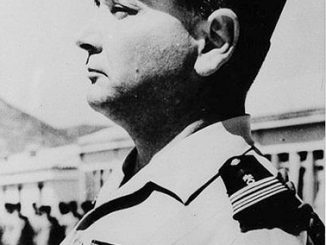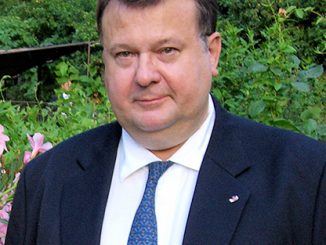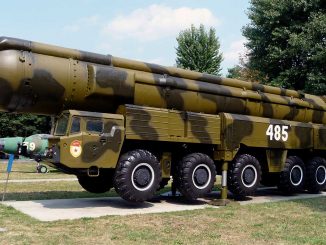American and South Korean military leaders met at the Pentagon today to discuss the alliance between the two countries and ways to make the alliance even stronger.
American and South Korean military leaders met at the Pentagon today to discuss the alliance between the two countries and ways to make the alliance even stronger.
The United States has an ironclad commitment to the defense of South Korea
During the Military Committee Meeting between U.S. and South Korean military officials at the Pentagon today, Marine Corps Gen. Joe Dunford, the chairman of the Joint Chiefs of Staff, affirmed that despite the nuclear and missile threat from North Korea, the U.S.-South Korea alliance will continue to grow firmer and stronger, and the U.S. will continue its ironclad commitment to the defense of the Korean Peninsula. The deployment of the U.S. Army’s terminal high altitude area defense anti-ballistic missile system is a direct answer to North Korea’s nuclear and missile program, officials said. The THAAD system pictured here is a globally transportable, rapidly deployable capability to intercept and destroy ballistic missiles inside or outside the atmosphere during its final phase of flight, according to DoD’s Missile Defense Agency website. Lockheed Martin photo.
This is the 41st Military Committee Meeting between the two countries since 1978.
Also participating in the discussions were Navy Adm. Harry B. Harris Jr., the commander of U.S. Pacific Command; Army Gen. Vincent K. Brooks, the commander of Combined Forces Command and U.S. Forces Korea; and South Korean Navy Rear Adm. Chung An-ho, acting chief director of strategic planning.
Dunford affirmed that despite the nuclear and missile threat from North Korea, the U.S.-South Korea alliance will continue to grow firmer and stronger, and the U.S. will continue its ironclad commitment to the defense of the Korean Peninsula.
Lee emphasized “proactive cooperation” with the United States, including establishing a practical collaboration system and deployment of the U.S. Army’s terminal high altitude area defense anti-ballistic missile system.
Deployment of THAAD is a direct answer to North Korea’s nuclear and missile program.
North Korea’s Nuclear Program
Both military leaders strongly denounced North Korea’s nuclear and missile provocations, stating they pose a serious threat to the Korean Peninsula, to the region and to global peace and stability. North Korea first detonated a nuclear device in October 2006. It was the culmination of a secret nuclear program believed to be started in the early 1980s.
The most recent test was last month, and civilian experts estimated the size of the blast was two times that of the Hiroshima bomb in 1945. North Korean newspapers stated the device is small enough to be mounted on a ballistic missile.
In their meeting, Dunford and Lee agreed to continuously develop effective response measures in order to deter, and if necessary, respond to additional provocations from North Korea.
Conventional Force Structure
While the North Korean nuclear and missile programs are the most recent threat from the country, the North also maintains large conventional forces. Officials estimate the North Korean army has about 1 million soldiers equipped with around 5,500 tanks, 8,600 artillery pieces, 2,200 infantry fighting vehicles and about 4,800 multiple rocket launcher vehicles. Much of this equipment is antiquated, officials said, but the sheer numbers alone give the North Korean army a significant capability.
North Korea’s navy has about 60,000 sailors with submarines, landing ships, three frigates and about 450 gunboats. The North Koreans launched a missile from submarine in August, escalating an already tense situation.
The North Korean air force has about 110,000 active duty personnel and 940 aircraft. Some of the aircraft are antiquated MiGs, but they also maintain about 30 MiG-29s — a highly capable multi-role fighter.
North Korea also has a large special operations arm.
North Korea is working on building its cyberwar capabilities, DoD officials said. The December 2014 hack into Sony Pictures, constant hacking of U.S. DoD sites, and attacks against South Korean banks and agencies are just the tip of the iceberg, officials said.
(Follow Jim Garamone on Twitter: @GaramoneDoDNews)
Related Stories
U.S. to Deploy THAAD Missile Battery to South Korea
Related Biographies
Marine Corps Gen. Joe Dunford
Army Gen. Vincent K. Brooks
Navy Adm. Harry B. Harris Jr.
Related Links










